Media outlets have been covering discussions on global warming, the greenhouse effect, and climate change for more than sixty years through academic journals, newspapers, magazines, and television news programs, bringing the discussion directly into people’s homes.
These discussions have been extensive and noteworthy. An analysis of archival content from U.S. newspapers on Newspapers.com, spanning from 1957 to 2000, reveals over 350,000 articles containing key phrases such as “greenhouse effect,” “global warming,” and “climate change.” This trend has only intensified in the years following, with significant increases in reporting from 2000 to 2022. Major U.S. newspapers, including The Washington Post, The Wall Street Journal, The New York Times, USA Today, and the Los Angeles Times, have collectively published more than 72,500 articles on these issues since 2000.
Time magazine has featured an article titled “Science: Warmer World,” highlighting the consensus among meteorologists regarding the current trend of global warming. The article emphasizes that there is strong agreement among experts that the Earth is experiencing a rise in temperatures, at least for the foreseeable future.
1939Popular Mechanics released an article discussing how the increasing concentration of carbon dioxide in the atmosphere is contributing to the rise in Earth's temperatures.


The New York Times featured an article titled "Why Earth Warms," which highlighted a speech by Dr. John Hutton from GE's engineering laboratory in Schenectady, New York. During his address to the Cleveland section of the American Institute of Electrical Engineers, Dr. Hutton noted that the increase in carbon dioxide emissions produced by human activities could be contributing to a greenhouse effect that impacts the Earth's climate.
The New York Times highlighted the work of scientist Gilbert Plass in its “Science in Review” section. Plass predicted that a doubling of carbon dioxide in the atmosphere could lead to a 4% increase in temperatures by 2080. Additionally, he forecasted a 30% rise in carbon dioxide levels each century, which would result in a temperature increase of 1.1°C.
1956The Washington Post ran front-page article “Teller Sees World-Flooding Peril Due to Industrial Overheating.” As reported, Teller concluded that, as a result, “the ice caps on the poles will begin to melt and the amount of water on the earth will increase . . . [and] ‘[s]uch places as New York and Holland would be inundated.”

The New York Times published a summary of the findings of the UN Study of Man’s Impact on Climate on the front page of its newspaper.
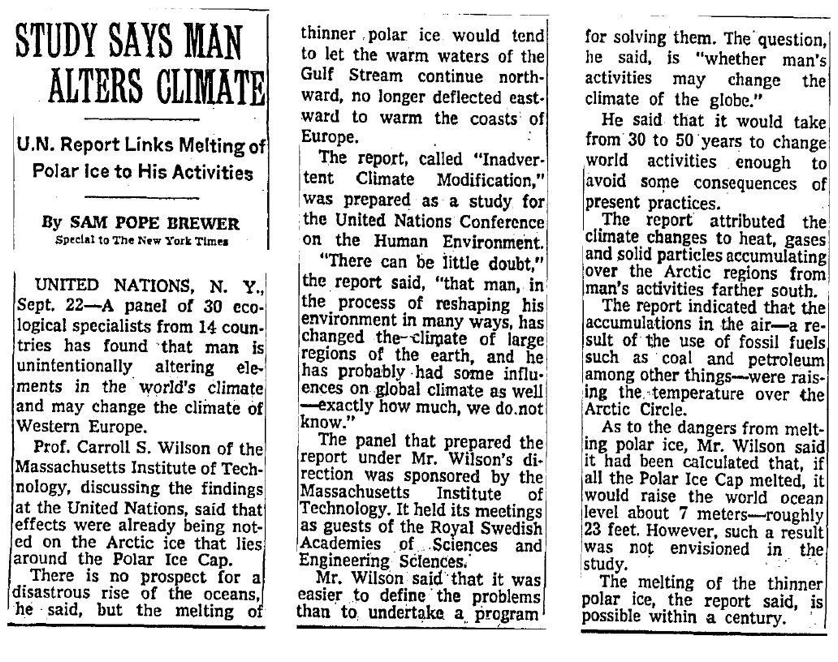
The New York Times ran the following two articles on climate change prior to the United Nations Conference on the Human Environment.
“Balancing of Cycles That Support Life”
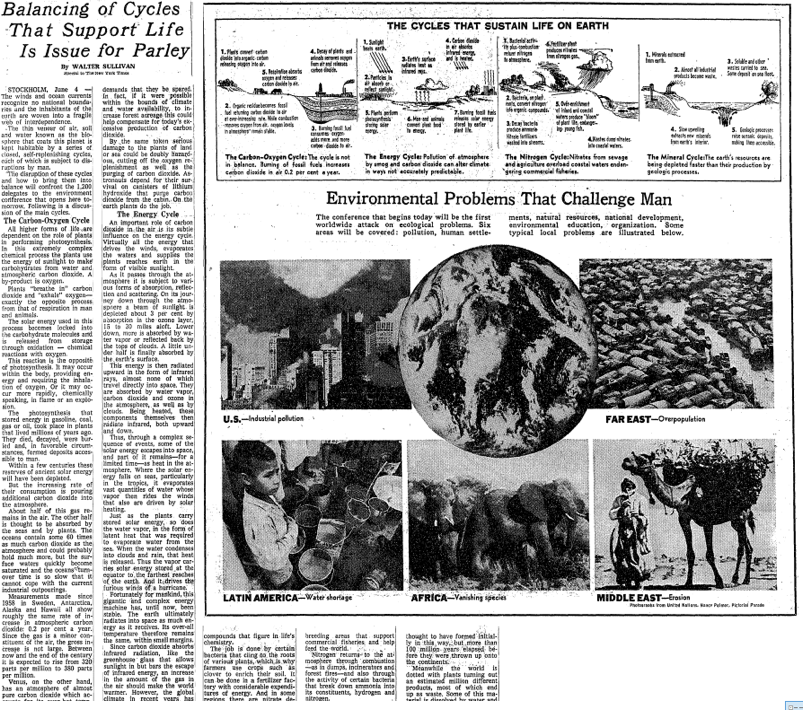
The “Carbon-Oxygen Cycle”

The November 1976 issue of National Geographic included a 45-page feature titled, “What’s Happening in Our Climate.”
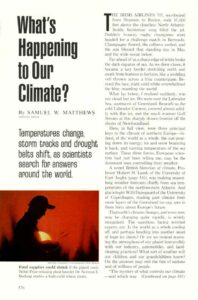
The Los Angeles Times and The New York Times covered the National Academy of Sciences’ Energy and Climate report.

The New York Times continued coverage of the discussion of this report one week after the Los Angeles Times in an article titled “Coal, Carbon Dioxide and Climate.”

The New York Times covered the First World Climate Conference with a headline that read, “A Vast ‘Interdisciplinary Effort’ To Predict Climate Change Urged.”
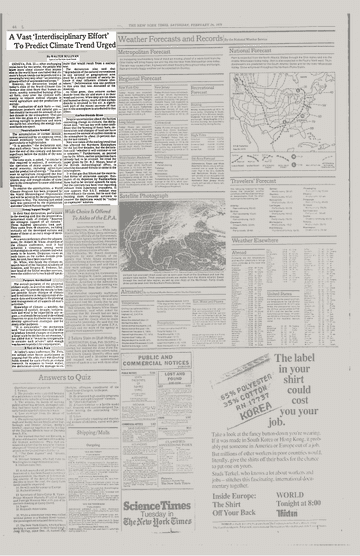
The New York Times gave front-page coverage to the climate change issue with a headline that read, “Study Finds Warming Trend That Could Raise Sea Levels.”

The Los Angeles Times ran an article on the front page, “Earth to Get Warmer Soon, U.S. Warns,” covering an EPA report titled “Can We Delay Greenhouse Warming.”

The New York Times celebrated the release of the Nierenberg Report on the day it was published, with two articles.

The New York Times covered a congressional hearing where a group of senators and scientists called for action to immediate action to address the anticipated increase in global temperatures.
1985Calvin and Hobbs, the famous comic strip, created a cartoon talking about the Greenhouse Effect potentially melting the polar ice caps.


Time magazine featured a cover story titled “The Heat Is On,” which highlights the urgent issue of climate change.
1987
Newsweek magazine featured a significant cover story titled “The Greenhouse Effect,” which discusses the impact of greenhouse gases on the Earth's climate and the implications for global warming.
The New York Times highlighted the issue of climate change by summarizing NASA scientist James Hansen’s testimony before Congress, in which he outlined the severe consequences associated with climate change.
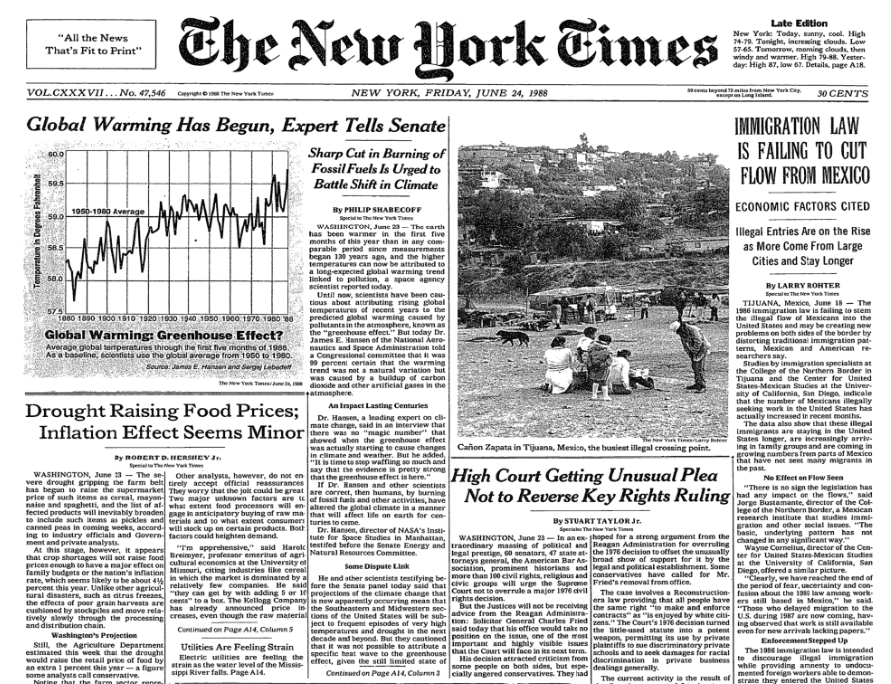

Time magazine again published another cover story featuring “Endangered Earth” as its “Time Person of the Year.”
The New York Times featured a front-page article that explores the financial implications of various climate change policies.

The New York Times featured a front-page article highlighting President Bush's signing of the United Nations Framework Convention for Climate Change. This significant event took place during the U.N. Conference on Environment and Development, commonly referred to as the RIO Earth Summit.

The New York Times highlighted uncertainties regarding the severity of climate change and its impact on specific regions, before the Kyoto Summit, which resulted in the Kyoto Protocol. Additionally, it pointed out the complexities in calculating the costs and benefits of reducing greenhouse gas emissions.
1997The New York Times ran two additional stories after the Kyoto summit titled “Meeting Reaches Accord to Reduce Greenhouse Gases” and “Warm Globe, Hot Politics.”


The Atlantic Monthly magazine depicted sunbathers on a tropical beach with icebergs looming in the distance. The caption read, “The Great Climate Flip-flop,” with the subtitle “Global warming could, paradoxically, cause a sudden catastrophic cooling.”
The New York Times published a story titled “Industrial Group Plans to Battle Climate Treaty” on its front page, which reported on leaked preliminary discussions from an April 1998 meeting of the American Petroleum Institute.

The New York Times published an article discussing the United States' decision to withdraw from the Kyoto Protocol. This piece included insights from various scientists who emphasized the importance of such international agreements for addressing climate change.

The New York Times published another article five days after its initial report on the United States' withdrawal from the Kyoto Protocol. This piece focused on President Bush's decision to reject the treaty despite receiving warnings from scientists about the potential consequences of such action.

During the George W. Bush administration. Time magazine and National Geographic ran cover features on global warming and its potential consequences.
2001
Time magazine features an important article that delves into the issue of "Global Warming," examining its causes, effects, and potential solutions.

Time magazine published an article titled “How to Save the Earth,” which discusses various strategies and actions that individuals and communities can take to promote environmental preservation and sustainability.

National Geographic highlights the urgent issue of climate change with its cover story titled “Global Warming: Bulletins From a Warmer World.”

Time magazine features a story that explores the question, “Are We Making Hurricanes Worse?”

Time magazine featured a cover story titled “Special Report on Global Warming,” highlighting the pressing issue of climate change and its implications for the planet.
2006
Time magazine’s cover highlights “The Global Warming Survival Guide,” providing readers with essential information on navigating the challenges posed by climate change.
The New York Times reported on the Supreme Court's ruling in Massachusetts v. Environmental Protection Agency, which established that the Environmental Protection Agency (EPA) possesses the authority to regulate greenhouse gas emissions.
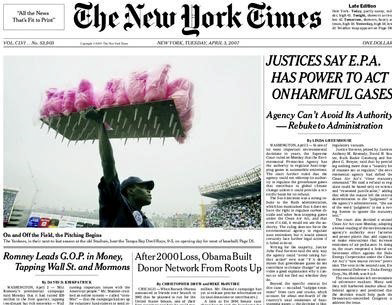

Time magazine once again features another climate change story on its cover “How to Win The War On Global Warming.”
2008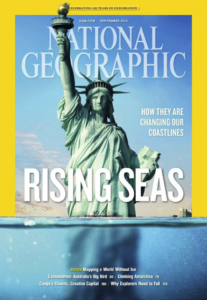
National Geographic featured an issue titled “Rising Seas” on its cover page that focused how they are changing our coastlines.
2013The New York Times published a prominent front-page article titled “Nations Approve Landmark Climate Deal,” highlighting the significance of the Paris Agreement. This historic accord represents a global commitment among nations to address climate change and reduce greenhouse gas emissions.
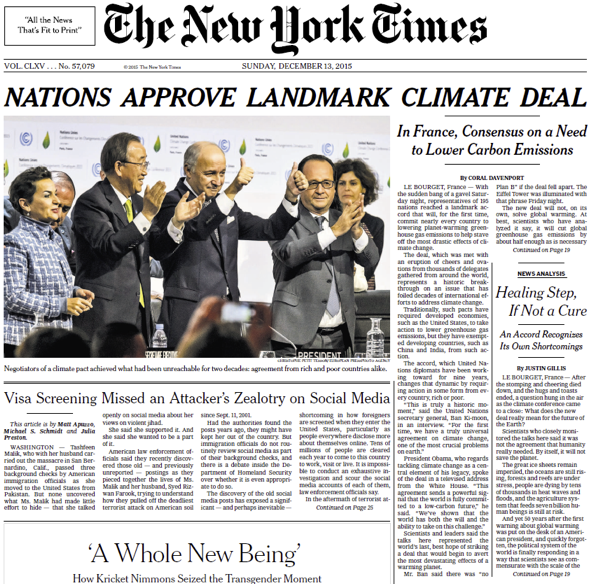

Time magazine highlighted a significant climate change issue on its cover, featuring a story titled “Our Sinking Planet.” This article aims to shed light on the urgent challenges posed by rising sea levels and the broader implications of climate change on our environment.

The Washington Post released 24 magazine covers about climate change.
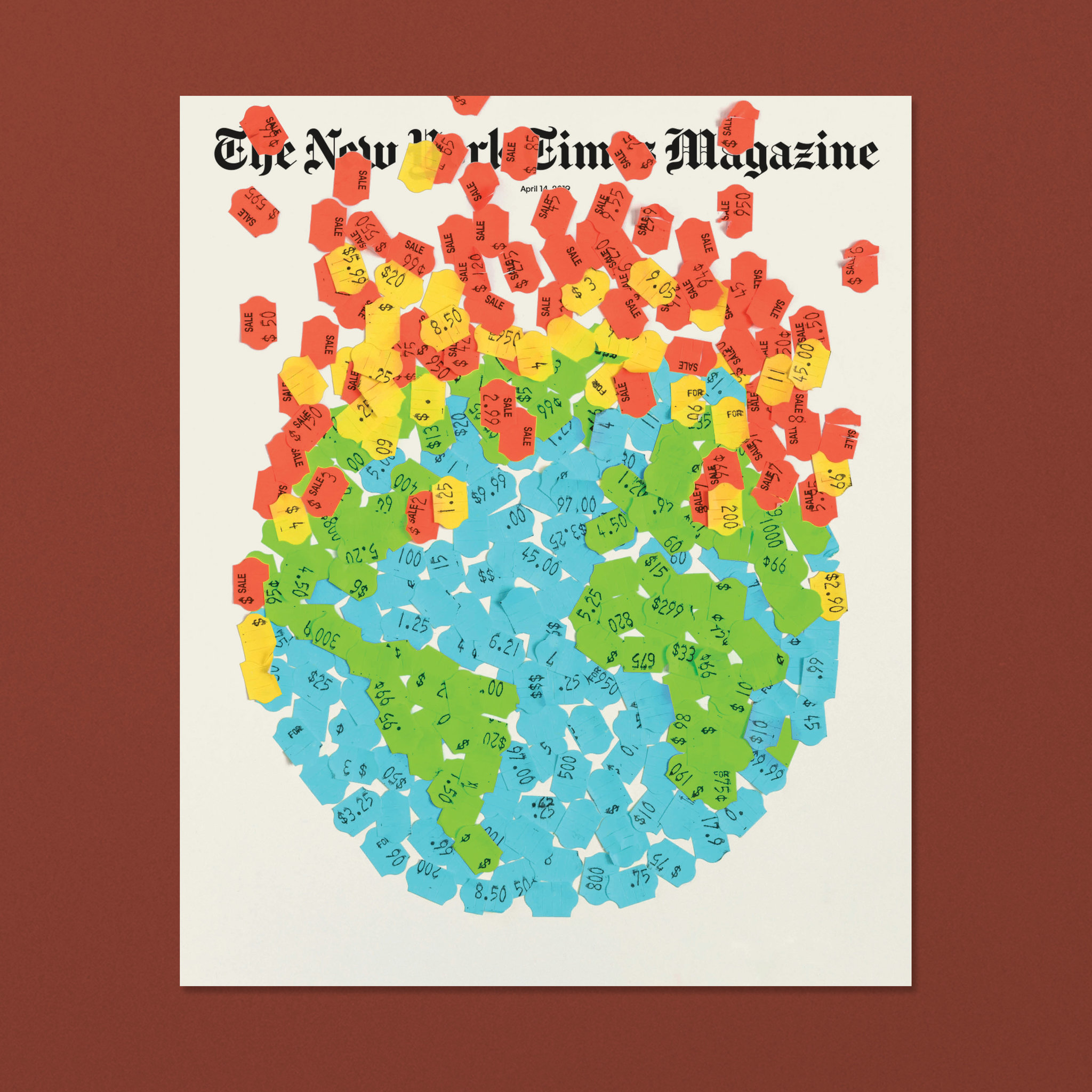
The New York Times released a climate issue with an image of the globe made up of price stickers.
2019NASA analyses noted that the Earth’s global average surface temperature in 2020 tied with 2016 as the warmest year on record.
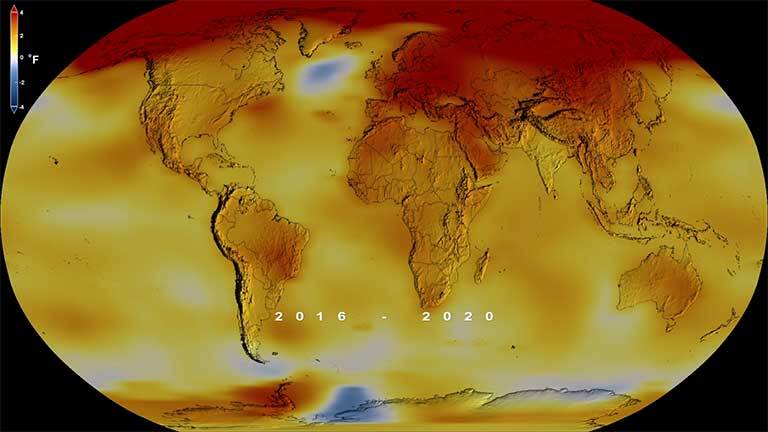
The New York Times reported on the IPCC’s sixth assessment report: Climate Change 2022: Impacts, Adaptation and Vulnerability, which concluded that countries aren’t doing enough to fight climate change.
Learn More2022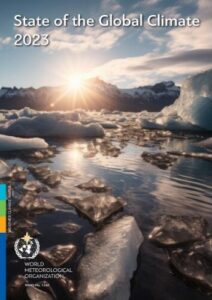
The World Meteorological Organization (WMO) released a report that suggested that 2023 was the warmest year on record, “with the global average near-surface temperature at 1.45°C (with a margin of uncertainty of ± 0.12°C) above the pre-industrial baseline.”
Learn More2023
Harper's released “The Incredible Disappearing Doomsday” cover marking the media’s change in tone around climate change.
Learn More2023